June may smell like roses, May smells like Lily of the Valley in my mind, but spring, sweet, sweet spring, smells like bark mulch.
Like many things in Horticulture, mulching really isn’t for the plants, but for us. Meant to imitate the look and ecosystem of a forest floor, mulch does neither, but it is not completely benefit free either. Mulch can help regulate soil temperatures in summer and winter, helps retain soil moisture, and can also help keep weeds out of the space. A little can go a long way, though, and as we’ve learned here, mulch is not something to just put down and forget.
Mulch can be a variety of materials, but let’s focus on tree bark and wood chips. On campus we use a double ground spruce/hemlock mix locally made in Newport, but that’s really all about looks. I used to be one of those people selling bark mulch, and so would steer people away from using (free) wood chips, but I’ve since recanted. The handy excuse I would use is that the as chips break down through normal soil processes they steal nutrients from the soil, and therefore the plants, but this has not been supported by research. And in fact a good mixed load of chips, twigs, leaves, and needles from the back of a typical arborist’s truck seems to imitate the duff of a forest floor nicely, and is becoming the preferred mulch for some. If you are interested, some good reading on this is published by Dr. Linda Chalker-Scott of Washington State University.
I used to say 3” of bark mulch was the right depth. I now think that’s too much and 2” is probably fine. Mulch too deep can actually inhibit water from reaching down to the roots, and/ or cause shallow rooting of trees. This is easy to see either by a white fungus growing throughout the mulch, or by roots growing right through the mulch.
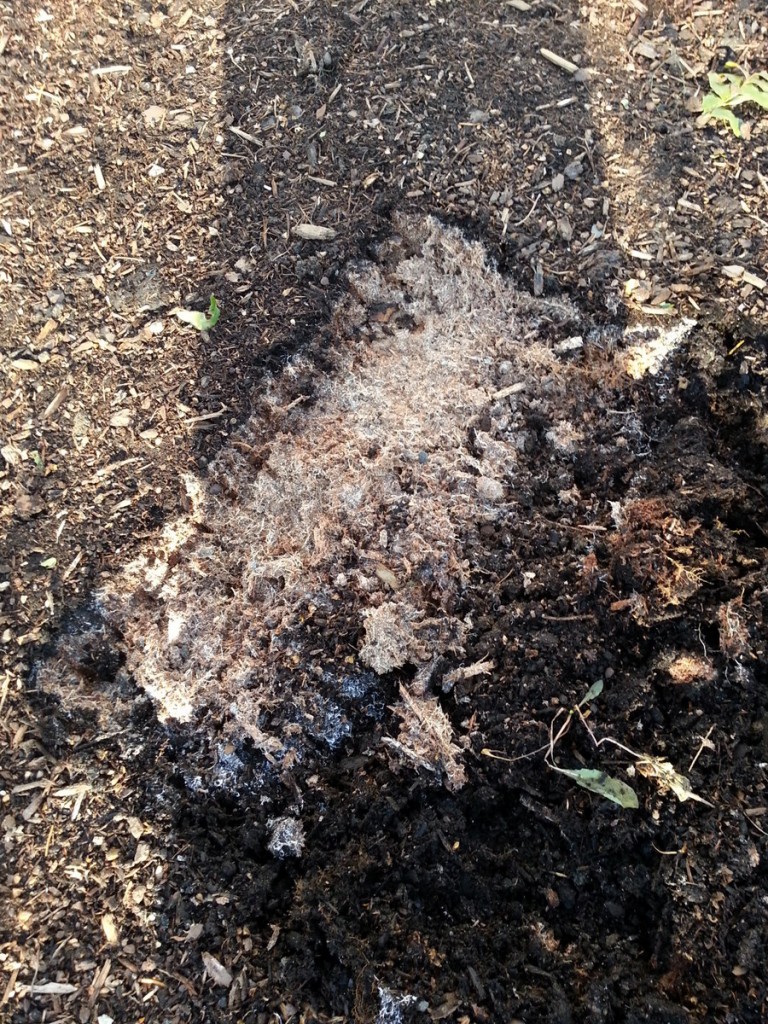
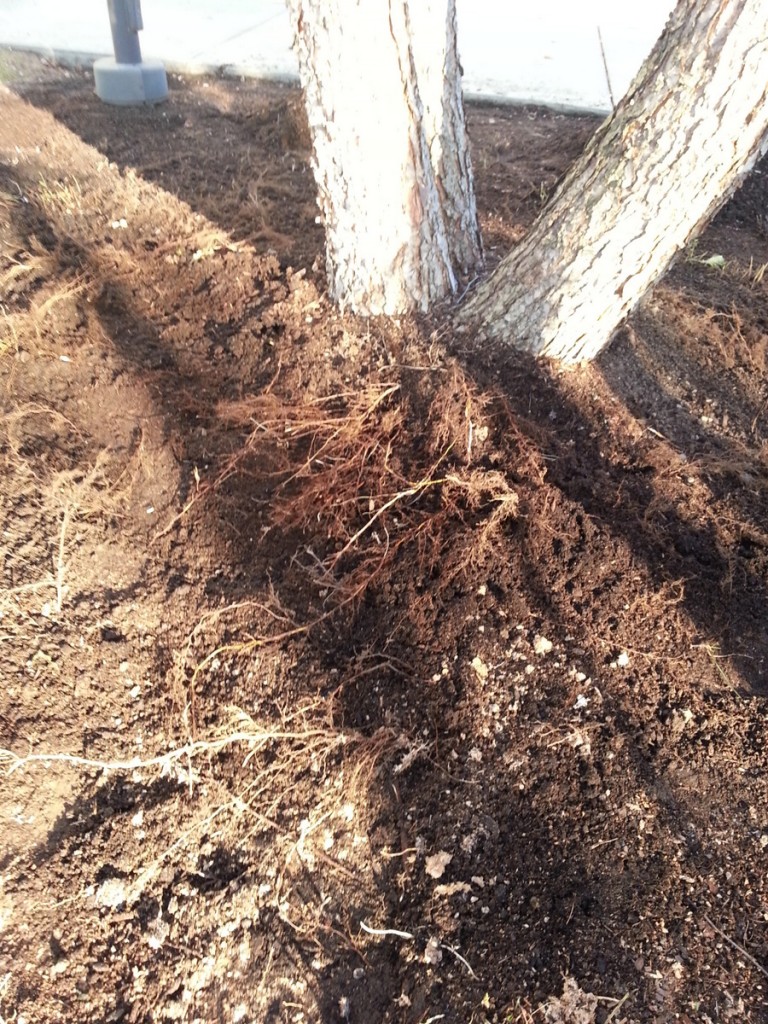
Too much of a finely shredded mulch can also decrease oxygen to the soil and roots. Unlike leaves, which make oxygen, roots require oxygen for respiration, and a thick layer of mulch will prevent good gas exchange between the soil and the atmosphere. The white fungus seen above has the added nastiness of turning the mulch hydrophobic, or water repellant. The mulch not only will not allow water to pass through, but will actively repel water right from the top, and let it run off.
Another thing I ignored in the past was the edict of not placing mulch against the trunk of the tree. I’d personally never seen any harm or problems by this practice, and being a busy landscaper, never took the time to push back the couple inch ring of bark mulch from around the trunk.
A gingko tree has recently proven me wrong. We’d noticed this tree declining for several years, and given the pattern of decline, assumed it was something wrong with the roots, like compaction or too abundant moisture. Closer inspection at the root flare (the most critical part of any tree) showed a ring of decay circling the entire tree, preventing all the nutrients and some of the water from its proper flow within the cambial layer. This decay was undoubtedly caused by the mulch against the trunk, and can be directly implicated in the death of the tree.
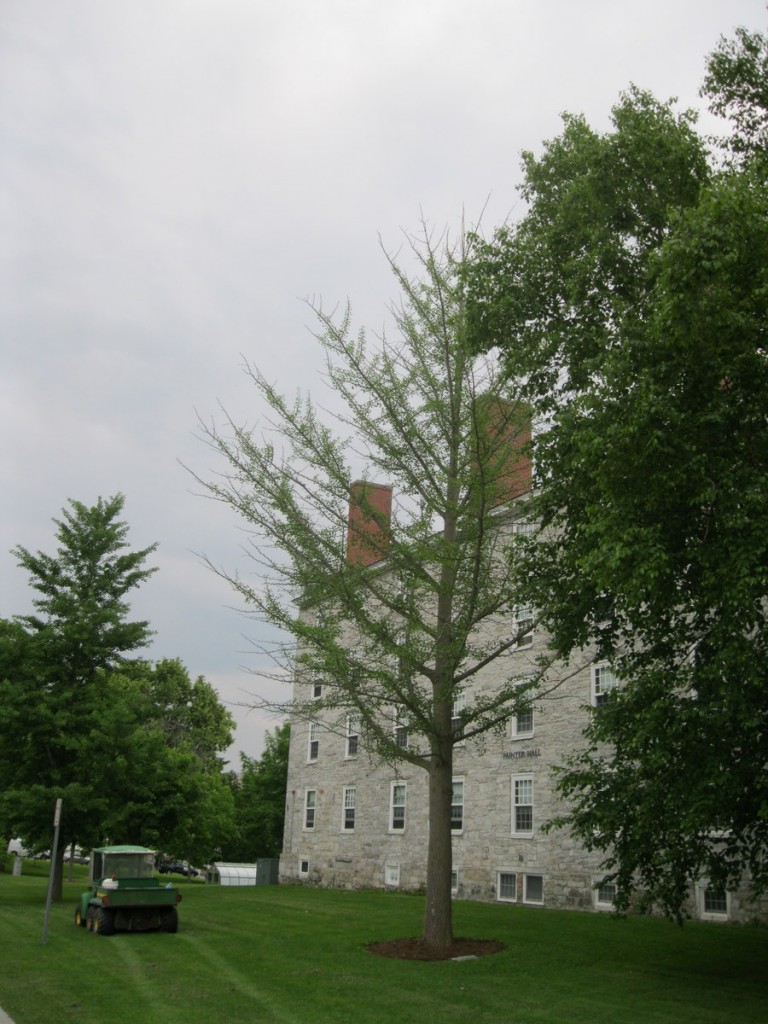
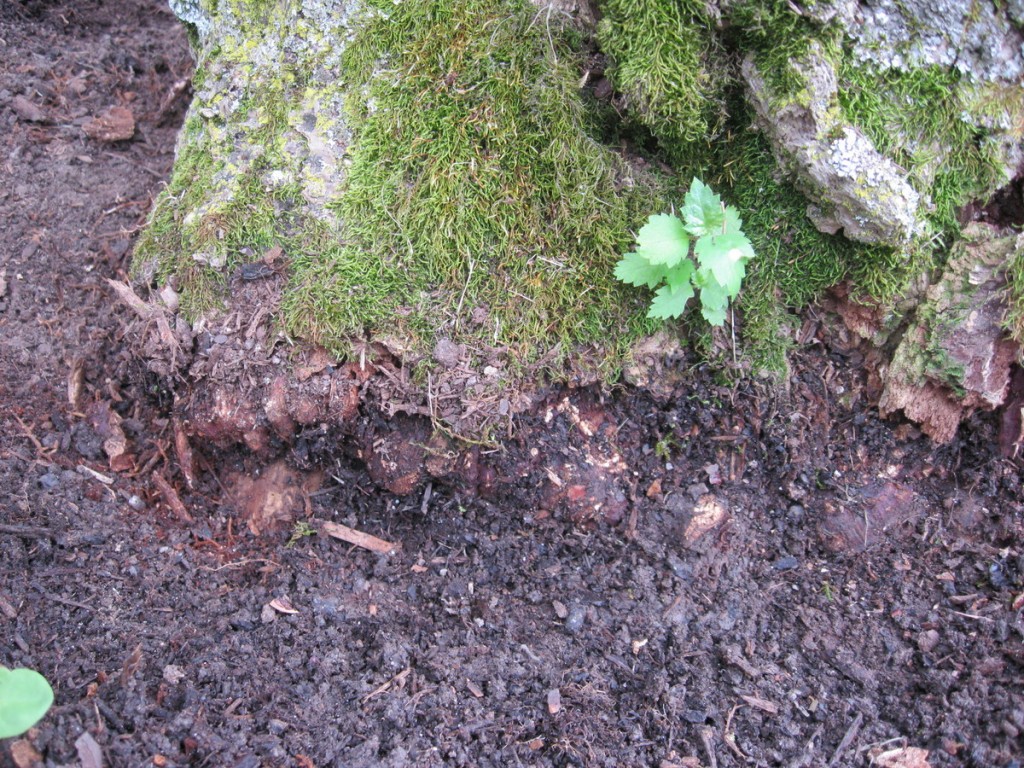
Even if the mulch did not cause the bark to rot away, the constant moisture against the trunk, like the roots in the example above, decrease gas exchange. The trunk needs oxygen much like the roots, and can’t do this when it is constantly moist from mulch.
So my new mulching recommendations are these. Mulch is good, about 2”, real shredded bark if you can afford it, wood chips if they are free. Avoid the dyed mulch, which just plain looks tacky. Don’t blindly put a new ½” to 1” of mulch on top of last years’, better to dig down in the old mulch to look and see what is going on. Maybe stir the mulch up some, break up any hydrophobic layers, or add some compost for a biological kick in the pants to break down the existing mulch and closer imitate a forest floor.
And stone pebbles for mulch? Only in a zen garden, please.

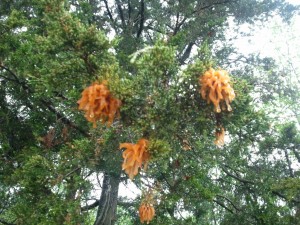
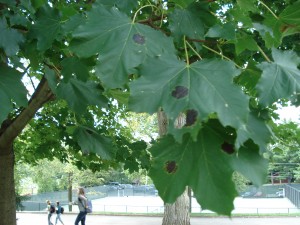
You must be logged in to post a comment.